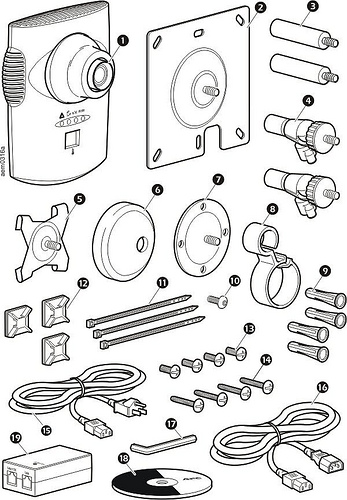
Bill Fehr is a technical illustration veteran, with 20 years experience in the field. In this interview, we discuss the technical skills, the ongoing learning of new software and technologies, and the exploration of new business models necessary for a sustainable career in illustration.
What is your background? How did you get into technical illustration?
I have worked and lived in St. Louis my whole life. I graduated in 1982 with an Associate in Applied Science degree in Technical Illustration from Meramec Community College here in St. Louis. I later went back and got my Bachelors in Business Management.
Since I was in High School I knew that I wanted to become a technical illustrator. That idea came to me when I was in drafting class and in the text book we were using was a description of what a technical illustrator does. It was accompanied by a photo of a guy using an airbrush to create a concept rendering of a car. That was it for me.
I was lucky enough to land a job as a technical illustrator before I graduated with my illustration degree. This was in the 80’s mind you so there were no computers. Everything was hand drawn. I was lucky enough back then to work for a small company where I had to learned to wear many hats. It was there that I learned to spec type, create photostats, airbrush, knockout backgrounds in photos, take photos, and paste up documents by hand.
In the eighties we didn’t have the advantages we have today of tracing digital photos or importing CAD data. Illustrations were created by extracting dimensions from blue prints or measuring actual parts. We would draw out the illustration in pencil first on a sheet of velum. We would then lay over that a sheet of mylar and “ink” the illustration using technical pens and templates. Inking was an art all by itself and one that I still miss to this day.
I have seen many changes over the 20-plus years that I have been doing this. The one thing that has never changed is the need for visual communication. The only difference between then and now is how it is created and how it is delivered.
How do you work? Employed, freelance or somewhere in between?
Currently I am employed by American Power Conversion as a technical writing manager. Our department creates installation, operation, maintenance, and service documents, just to name a few. In the evenings and weekend creating stock illustrations and photographs. I do very little freelance work. It requires much more time than I am willing to give these days.
What’s your favorite kind of project?
I still find black and white line art to be the most fun. Though at first it seems like it would be the easiest I find the opposite can to be true. You don’t have color, transparency, or animation to get you out of tough situations. All that you have to use to communicate is a black line. What you do with that line, now that is what makes all the difference. To me it’s very Zen-like.

Any advice for technical illustrators just starting out?
Experience with software is secondary to technical knowledge. Anyone can learn software. The ones that can get themselves out of tough situations without using software in as a crutch are the ones that I respect the most. That’s not to say the you don’t need to know how to use Illustrator, or CorelDRAW, or whatever. In fact, the better you know the software the better you can illustrate because the software is not “getting in your way.” I’m just saying that you shouldn’t rely on the software to replace technical knowledge. There were many times where I had to rely on my technical training to get me through projects that had no reference photos or CAD data. All I had was a rough prototype and some napkin sketches.

What is your software of choice?
Everyone has their favorite software. This is usually the software that they have used the most and are most familiar with. For many years I have used CorelDRAW exclusively. Once I started getting into stock illustration however I started to migrate over to Adobe Illustrator because stock agencies require an Illustrator version 8 compatible EPS file. It was much easier to make the transition to AI than it was to go through the process of exporting Draw files over to Illustrator, make correction, then export to EPS. I also moved to an iMac recently so that drove my decision to move Illustrator as well.
I have used a few vector illustrations packages over the years, CorelDRAW, Corel Designer, Xara Xtreme, IsoDraw, Deneba Canvas, and Adobe Illustrator. I also have used Solid Edge, SoldWorks, AutoCad, Maya, 3D Studio Max, and Blender for 3D modeling and rendering work.
Most of my experience has been with CorelDRAW. It has, I believe, one of the best toolsets for technical black and white line art. It allows you to draw with much more precision and at a higher rate of speed than other programs. I have also created a custom technical illustration toolbar that I use within DRAW which helps me get through an illustration pretty fast. I also like that the overall file size is small. CorelDRAW is great for those just starting out because it is inexpensive.
The downside to CorelDRAW is that it is a bit buggy and will crash at the drop of a hat. I have learned to save versions of the file that I am working on just in case of such a crash. CorelDRAW does create backup files and crash recovery files but they are not always usable.

You sell stock illustration via iStockPhoto, Shutterstock and Dreamstime. What has your experience been with this?
I love the microstock business. It’s kind of the best of both worlds. On one hand I can create what I want when I want and still get paid. Of course the more your work aligns with the needs of the customers the more money you will make.
The stock photography and illustration business can be tough to define. What is going on is your trying to guess what somebody might need. You want to create images that can be incorporated into design pieces, film, advertising, mailers, etc. You can try to communicate concepts or ideas like space travel or a health care. It can be fun and challenging.
I think creating stock images fits my personality and lifestyle better than doing freelance work. I am under no pressure and I can work whenever I want. I have done my share of freelance and I don’t care for having to find the jobs during the day then working evenings, weekends and holidays to get it done.
Bill’s technical illustration work can be found at TekART Technical Illustration, and his fine art and photography at BillFehr.com.
I should have commented before as I’m working on some medical illustrations myself. Bill’s work looks great, love that syringe illustration!